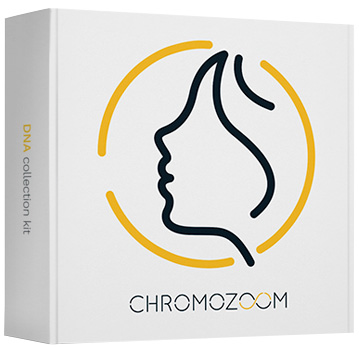Alopecia androgenetic
Excessive to complete hair loss (alopecia) usually begins to occur after puberty. The rate of progression is unique to the individual and is influenced by genetic predispositions and hormonal imbalances caused by excessive androgens (male sex hormones) effects.
At up to 50 years of age, androgenic alopecia affects 50% of males and 25% of females and its prevalence increases with age. Caucasian males are affected four times more frequently than black males. Alopecia can also affect females, most often after 40 years of age. In females, in addition to androgenic hormones, the development of this disease is also influenced by a decrease in oestrogenic hormones during menopause. In males, alopecia results in a gradual receding of the hairline, while females experience an even thinning of hair.The main causes of alopecia
Androgenic alopecia is caused by excessive activity of androgens, particularly dihydrotestosterone, in the hair follicle. The 5-alpha-reductase enzyme converts testosterone to dihydrotestosterone (DHT), which is five times more effective than testosterone. Based on studies, the binding of DHT to androgen receptors in the hair follicles leads to the formation of a compound that can subsequently affect the genes involved in hair growth (shrinking hair follicles). Excessive androgen effects in the hair follicles can be caused by an increased amount of androgen receptors, enhanced production of DHT, or elevated 5-alpha-reductase enzyme concentrations.The precise mechanism by which androgens disturb the hair lifecycle remains unclear. More genes are assumed to be involved in a genetic predisposition, which influence the age of onset, type of the manifestation, and the rate of progression of alopecia (baldness).
Lifecycle of hair
The lifecycle of hair is a constant restoration of growth. In males, this cycle lasts an average of three years and 4-7 years for females. Hair grows steadily throughout this period, gradually dying at the end of its cycle, and is replaced by a new hair. Dead hairs do not immediately fall out. It takes approximately 2-4 months for dead hair to be released from its hair follicle. The rate of hair growth decreases with age. The normal hair lifecycle consists of three phases: anagen, catagen, and telogen.The growth phase of hair is referred to as anagen. During this phase, which takes about 2-7 years, the restoration of the hair follicle, development of hair, and the root sheath forming the hair bulb occur. At this stage, the hair is firmly bound in the hair follicle. The length of the hair is determined by the length of the anagen phase. At the end of this phase, the hair gradually dies, and the transition to the catagen phase lasts 1-2 weeks. In the catagen phase, the hair bulbous breaks down, old hair is removed, and the preparation of the hair follicle for the growth of a new hair begins.
The dying hair follicle shrinks and moves along with the hair to the surface of the scalp. The last phase is telogen when the hair falls out. The telogen phase takes about 5-6 weeks. Hair during this phase often falls out during washing and combing. The hair follicle then again goes into the anagen phase and the cycle is repeated. On average, 90% of the hair is in the anagen phase, 1% in the catagen phase, and 9% in the telogen phase.
Increased hair loss in androgenic alopecia is caused by a gradual decrease in hair follicle size and by a change in the dynamics of the hair lifecycle through androgen effects. The anagen phase is shortened and the number of hairs in the telogen phase is higher. The gradual decrease in the hair follicle affects the dermal papilla, which delivers nutrients into the hair bulb and is necessary for hair growth. Decreasing the hair follicle results in a thinning of the hair and a reduction in its pigmentation.
Methionine and cysteine
Methionine is one of the essential amino acids. The body does not produce methionine itself and therefore methionine must be supplemented via an individual’s diet. Methionine is a precursor of amino acids for the synthesis of several other substances such as cysteine and creatine. This amino acid strengthens nails and hair and is a source of sulphur. Methionine deficiency is associated with hair loss.
Cysteine is one of amino acids important for protein structures as it forms disulphide bridges containing two sulphur atoms. This amino acid is highly represented in the keratin protein, which is responsible for hair and nails. Cysteine deficiency leads to weak and brittle hair and nails.
Structure of hair
Hair consists mainly of cornified protein which is called keratin. A hair follicle anchors each hair into the skin. The hair bulb forms the base of the hair follicles. Living cells of hair bulb divide and grow to build the hair shaft. Blood vessels nourish the cells in the hair bulb, and deliver hormones that modify hair growth and structure at different times of life.The hair fiber consists of three basic elements: cuticle, cortex and medulla. The medulla is in the centre of the hair surrounded by the cortex. Cortex is the major part of the fibre mass and made up of keratin proteins and structural lipids. The cortex is surrounded by the external layer called cuticle. This layer is formed by dead, overlapping cells and formes a protective layer around the hair.
